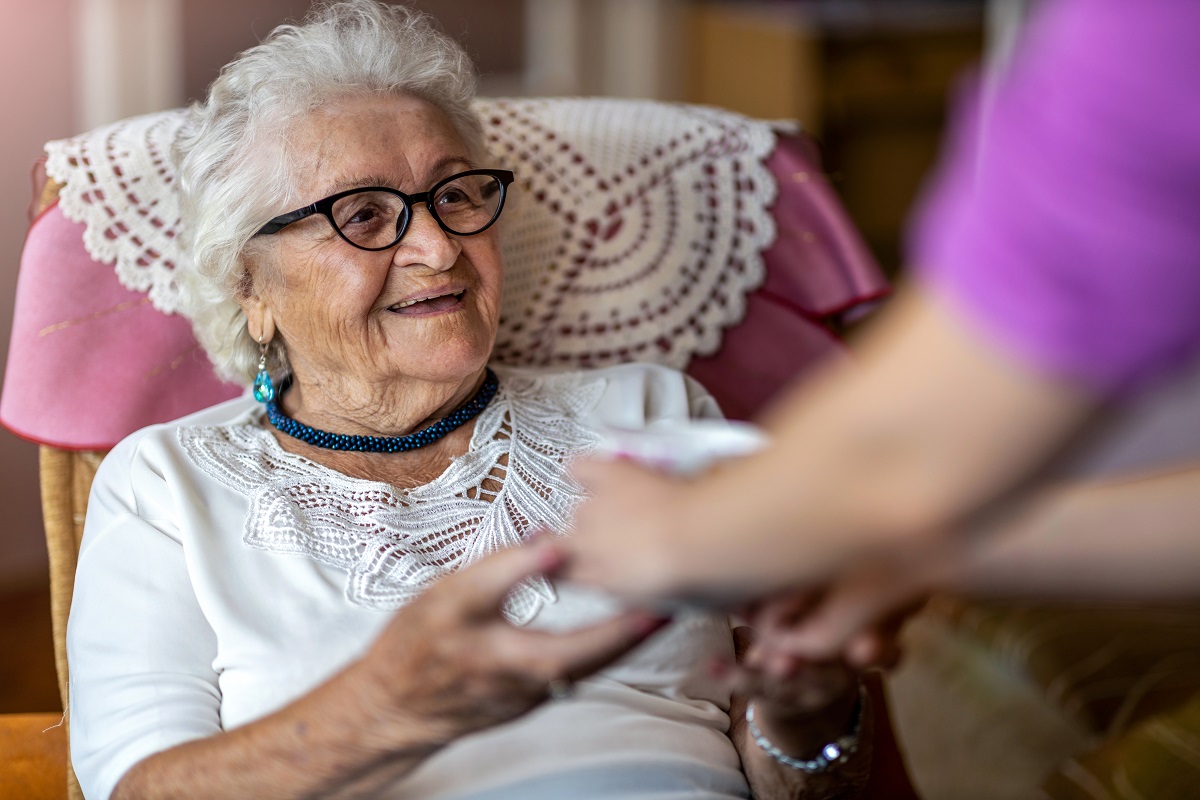Creating a dementia-safe bedroom
Find out how to create a relaxing, comfortable bedroom which is safe enough for everybody (you included) to be able to sleep soundly
Bedrooms are a sanctuary for us all, a place to rest and unwind. If you’re living with dementia life can feel very stressful so getting a good night’s sleep is vital. It’s also really important that you can get up during the night if you have to, without tripping, falling or becoming disorientated.
These are the types of challenges you might face, and how to solve them
1. Getting into or out of bed
2. Night time wandering
3. Getting to the toilet
4. Finding their way at night
5. Telling the time
6. Getting dressed in the morning
1. Challenge: Getting into or out of bed
Why: Age and mobility problems can make these seemingly simple tasks difficult. Pulling yourself up into a seated position may be harder than it used to be. It’s important to address these sorts of issues quite quickly because falling out of bed can cause serious injury.
Solve it: The good news is that there are already lots of products available to help. For example, mattress elevators which help push someone up into a sitting position, or bed support rails which can be used to lean on when sitting down or getting up from a bed.
2. Challenge: Night time wandering
Why: People with dementia rarely wander about aimlessly they’re usually trying to get somewhere but find themselves lost or disorientated. At night, they’re probably trying to find the bathroom, or get back to their bedroom.
Solve it: You can set up bed sensors, which are placed under a pillow or mattress and can tell if someone has left their bed. They then either trigger an alarm, or are linked up to a telecare system which can send a message to a carer or family member to let them know they’ve got out of bed and haven’t returned. You can also install a bedside motion detector which will send an alert if it detects someone getting out of bed.
3. Challenge: Getting to the toilet
Why: Incontinence can be one of the most upsetting side effects of dementia. It’s traumatic for both the person affected and for the carer, but try not to panic, symptoms of incontinence can be managed.
Did you know? Night time incontinence often has a simple cause. Perhaps the person with dementia can’t get to the toilet in time, struggles to see his way to the bathroom or no longer recognises the ‘urge’ to go. Occasionally, incontinence is a side effect of other problems including urinary tract infections (UTIs) and prostate gland problems. Working out the likely cause is the first step to tacking it.
Solve it: The good news is there are lots of products available to make life easier. Fit waterproof mattress and duvet protector to ensure the bedding is protected. You can set up an incontinence alarm which will alert the sleeper or nearby carers if it detects moisture. You could also provide them with absorbent underwear or incontinence pads to sleep in.
It might also be worth placing a commode next to the bed so they don’t have to go far if they need the toilet.
4. Challenge: Finding their way at night
Why: If the person you’re caring for needs to get up in the middle of the night, you don’t want them to be fumbling around in the dark trying to find a light switch, as this can easily cause accidents and increase their changes of tripping or falling.
Solve it:
Set up night lights that are triggered when someone walks by or if a door is opened. Bedside lamps that can be easily turned on by simply tapping the base rather than having to find a fiddly switch can also be useful too.
5. Challenge: Telling the time
Why: Struggling to know whether it’s morning, evening or the middle of the night, is a very common problem for people living with dementia. In fact, forgetting how to tell the time is one of the ‘classic’ symptoms of early dementia (being able to tell the time properly is one of the tests carried out when diagnosing the condition), so it’s easy to see why it can cause so much confusion. Even if they do know the time, they might still get muddled about whether it’s am or pm.
Solve it: Simplified clocks and watches with clear numbers and hands can be very useful. You can also get radio controlled talking clocks or clocks that simply say it’s ‘Thursday morning’ or ‘Friday afternoon’, without providing any other potentially confusing details. When nights get lighter in summer time it could be worth investing in some blackout blinds to ensure their sleep doesn’t get interrupted.
6. Challenge: Getting dressed in the morning
Why: Picking suitable clothes, and putting them on in the right order can be tricky for anyone living with dementia. If they also have mobility problems they might struggle with buttons, zips or laces, too, or have trouble bending down to put on tights or socks.
Solve it: Be prepared! Lay out clothes for them outside the cupboard in a clear order so they can avoid having to look inside wardrobes and drawers and become overwhelmed by all the choice. Perhaps you could both decide on the outfit the night before, then attach each item to a numbered hanger so they know the order in which to put it on.
Investigate dressing aids that will help them put on socks, tights and shoes, or elastic shoe laces so they don’t need to worry about tying laces up.
SHARE
Explore more




